The past week was remembered, first of all, by the world premiere Huawei of the P40 Pro and other smartphones of this family. In addition, they showed their own voice assistant from Huawei. The fight against coronavirus also continues, and someone is trying to give us a fake Google Chrome update. Let me remind you that Google itself announced that updates will not be released yet. Therefore, it is better not to install it if you come across it. There was other news, of course. We'll talk about all this in our traditional weekly news release. Make yourself comfortable. We begin.

The main novelty of this week.
WHO has prepared an app for the prevention of coronavirus.
At a time when a pandemic was declared in the world, people were divided into two camps. Some believe that this is the beginning of a zombie apocalypse, we will all die and walk the streets in search of our Rick Grimes. Others, on the contrary, consider this hysteria unnecessary and ignore it in every possible way. But we bought a couple of bags of buckwheat just in case. The governments of the countries of the world take their actions and coordinate actions through the World Health Organization. Ordinary people want it all to end faster and not to catch them personally. Now, in order to reduce the danger to people, the same WHO is preparing a special application with great capabilities, which can, without exaggeration, save life.
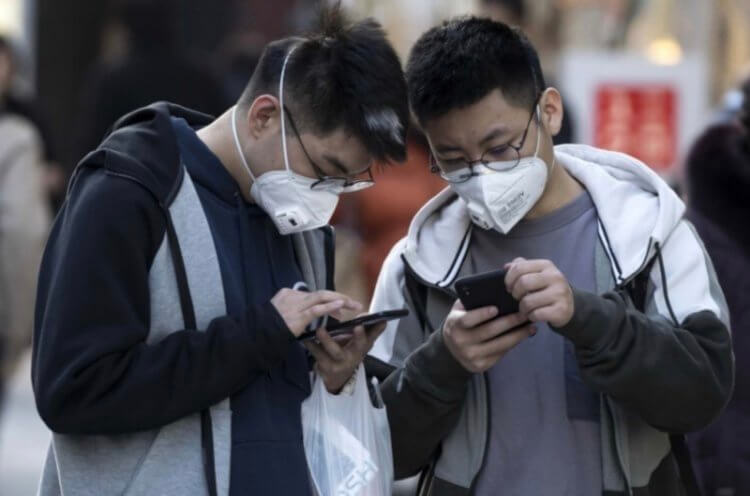
The smartphone will help protect against the virus.
WHO is an abbreviation that stands for World Health Organization. It is such an international body that monitors the health of people around the world. They track outbreaks of epidemics, participate in their elimination and make recommendations for people to be healthier in general.
There are many theories about what WHO is. For example, many say that this is not the good that the organization wants to appear to be, but real evil. Allegedly, the essence of the organization boils down to experimenting on African children and thereby helping the “chosen nations” become better. Let's leave that to supporters of conspiracy theories.
In reality, most of us, without knowing it, live according to the recommendations of the WHO. This can include eating habits, sleeping for eight hours, quitting bad habits, and more.
Now many people know that they need to wash their hands more often, avoid crowds of people, and do not travel to Italy and other countries. This is useful knowledge, but the media and social networks are vying with each other to tell us that is not relevant to reality. This clogging of memory can sometimes have a very negative impact on a person and their life.
To combat this, the WHO decided to release special applications for Android and iOS so that people get information from the source. Besides the version for mobile devices, there will also be a web version.
In all cases, the information will contain useful tips on how to behave in a pandemic, news, tips, warnings and much more. All for more awareness of people.
It is planned that the application will be called “WHO MyHealth”. It was originally suggested by a group of volunteer experts. The team consists of former Google employees and Microsoft, WHO advisors and ambassadors, and experts from several other industries.

This is how the application design looks. nothing extra.
An early version of the app is slated to launch on Monday 30 March. However, the application is open source and our colleagues from 9to5goggle.com were able to test it and see what it is. They immediately concluded that the appendix contains recommendations previously made by WHO. In general, this is very logical.
An interesting feature is the possibility of warning a person that he is in a danger zone, where the risk of infection is significantly higher. If you suspect that you have contracted the coronavirus, in the sentence you can check the list of symptoms and conduct a basic “self-diagnosis”.
If a person infected with coronavirus is not afraid that someone will analyze his movements, he will be able to allow the application to collect statistics to summarize and warn other users. Also, the application will be able to analyze his contacts in order to understand the directions of the spread of the virus and to warn potential victims.
Using Google Maps data, the application will be able to match the user's movement data with the movement data of infected people. So it will be possible to understand where and at what moment there was a risk of transmission of the virus. Or you, on the contrary, like a slalom skier, trowels have evaded carriers of the virus.
The application is built on the cross-platform Google Flutter SDK. This allows you to realize the potential of the service not only on smartphones, but also on other devices, including those that support only the web versions of the services. In doing so, members of the Google Flutter teams volunteered to help and advise those who were developing the application.
Given the open work on the application, the team is very willing to help. Therefore, almost anyone who understands Google Flutter can offer to share their experience. Given that it is not known if the application will support languages other than English, the team may need translators.
So far, nothing more is known about the application, but, most likely, it will be possible to download it in a couple of days.
In general, we live in interesting times. Hundreds of years ago, people did not even know what an infection or a virus was. As a result, whole villages or cities died out and thought that they were punished by higher powers.
Dozens of years ago, there was not even a means of warning and it was necessary to collect information bit by bit. True, there were not so many distractions and speculations and assumptions did not sound from each iron.
A few years ago, people could get information, but not as quickly as they are now. But these days, you just open the app and see where you could have been infected. The main thing is that users share the data, and the developers do not abuse it. In any case, perhaps, the fight against the virus has never been as technologically advanced as it is now. It remains only to wait for Monday, when the application will be released officially, and then we will live.
Fake updates for Google Chrome
The temporary halt of the Chrome browser update announced by Google was a rather unexpected measure. Despite the fact that the company promised to freeze the release of only new functions, while continuing to systematically launch security patches with fixes, this led to even more negative consequences than one could imagine. This situation was exploited by hackers who began distributing fake updates for the desktop version of Chrome, which in fact turned out to be an application for remote control of the TeamViewer computer and a program that records keyboard strokes.
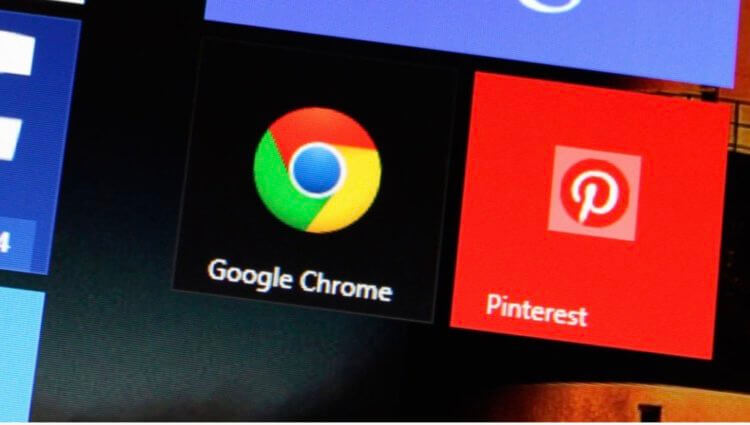
Google Chrome won't update and that's ok
The spread of fake updates was reported by the experts of the anti-virus company Doctor Web. According to them, they found several sites that cybercriminals used to distribute, and counted a total of more than 2,000 downloads. That is, it turns out that now there are about two thousand people who are under threat. Indeed, unlike Trojans posing as other applications, fake updates have a much higher conversion rate because users don't expect a catch.

No need to download updates from third-party sources. Generally. Never
According to Doctor Web experts, fake updates are distributed by Russian hackers and are also targeted at the Russian-speaking audience. Therefore, it should be expected that the instructions accompanying the installation will be fully translated into Russian, which can further mislead users about its origin and purpose. But does this mean that you cannot protect yourself from fake updates? Of course not.
First, you need to make it a rule not to download updates from third-party sources, even if this is an official site. Today developers quite regularly distribute updates through applications, without forcing users to search for them on their own. When the latest version becomes available, the program installs itself, or allows you to check for their availability manually. In the case of Chrome, everything happens automatically, sometimes the user is only required to confirm the restart.
Second, keep a close eye on what you install. Chrome often blocks dangerous downloads by itself. But if this did not happen, pay attention to the composition in which the update that you downloaded gets to the computer. If it is an archive with several components, do not start the installation process, but what if you did? see how the installer is decorated. As a rule, attackers do not bother too much about this and do not try to repeat the original design of the application that they are faking.
Third, stay tuned. We report situations like this regularly and in a timely manner. For example, the news about the suspension of the Chrome update came out earlier than most news outlets, so by reading Android Insider.ru, you will not only learn about the changes in the world of technology before anyone else, but also find actionable advice to prevent infection and self-defense against malware.
What if you weren't lucky enough to download a fake update that turned out to be malware? Most likely, a banal deletion is unlikely to help, but it's worth a try, especially since TeamViewer is a completely ordinary program, not a virus. If you have Windows, go to the 'Programs and Features' section and uninstall it, if any. But with keyloggers that reads keystrokes, everything is much more complicated. Therefore, to remove it, I would advise you to use an antivirus – it will definitely cope with it.
Celia. Voice assistant from Huawei
If you still think that Huawei is still hoping for a renewed relationship with Google, you are wrong. During the confrontation with the United States, the Chinese managed to create so many of their own services that I personally really began to understand the meaning of the phrase “sanctions are only for our benefit.” Voice assistant Celia, which Huawei introduced yesterday along with the flagship P40, is the best example of this. After all, if the Chinese had the AppGallery app store for a long time, although it did not develop, it is obvious that they really had to create an assistant from scratch, because without it today there is nothing.
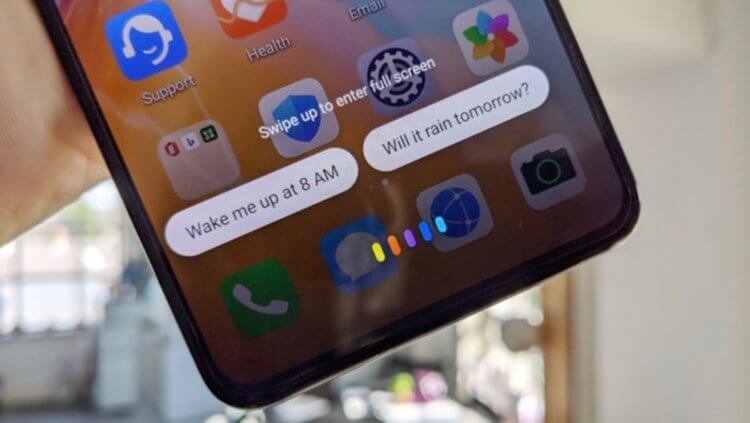
Celia – new voice assistant from Huawei
Despite the fact that Huawei released Celia, practically nothing was said about it at the P40 presentation. Apparently, this is due to the fact that the assistant is still at an early stage of its development and Huawei there is a lot of work to improve it. Nevertheless, already now it is a quite working tool that can be called by the command “Hey, Celia” by analogy with Siri and Google Assistant, which are also able to perceive trigger phrases and turn on even if the user does not touch the smartphone.

In fact, Celia has taken quite a lot from the competition. Moreover Huawei combined the distinctive features of Siri and Google Assistant in such a way that the output turned out to be something, on the one hand, painfully familiar, and, on the other, something completely new. For example, the layout of dialogs, widgets and an interface button for activating the recording is taken from Siri, which the Chinese, so that it is not too obvious, repainted in other colors, while maintaining the usual gradient. As a result, if you close the bottom and top of the screen, it will be almost impossible to distinguish Celia from Siri.
From Google Assistant, here's a compact mode that lets you launch Celia right on the desktop without overlapping the main screen content, animation of the user's voice recording that appears in place of the dialog activation button, and placement of controls at the bottom of the screen. For example, a keypad button for text input requests and a camera activation button for scanning visible objects. This function can be used to translate foreign signs, banners and simple documents.
However, while the functionality of Celia leaves much to be desired. Firstly, at the moment the assistant knows only three languages: English, French and Spanish. Secondly, it recognizes only primitive commands like forecasting the weather, sending messages and switching songs, and is unable to perform more serious tasks, such as Google Assistant. Thirdly, Celia still works only on Huawei P40 and owners of other devices Huawei will not be able to use the assistant until the release of EMUI 10.1, whose release is scheduled for mid-2020.
Of course, the desire Huawei to launch its own voice assistant to compete with Google Assistant and Siri deserves respect. Still, for this, the Chinese had to do a lot of work, orienting the project entirely to the Western market. However, I strongly doubt that Huawei will manage to reach the level of Google Assistant and 'Alice' from Yandex at least within the next couple of years. Still, the development of voice assistants takes time, and none of the market representatives fired right away, as soon as they entered the market.
Will I be using Celia when she gets Russian? I strongly doubt it. The fact is that in terms of convenience and connectivity with Russian services, Alisa is out of competition, and Google Assistant has no equal in terms of functionality. The search giant's voice assistant can do things that no other competitor can do. Therefore, at this stage, Celia does not exist for me. Perhaps in a couple of years it will be brought to mind, but do not forget that Google Assistant and 'Alice' will be two years larger by that time, which means that their functionality will become noticeably wider.
Huawei introduced the new flagship P40. Need to take?
The presentation of the line of smartphones Huawei P40 has just ended. At another time, we would be happy about this, since it is this line that is significant not only for Huawei, but for the entire industry as a whole. This year, the smartphone will be left without what is so dear to many in Android – Google services. But the company is not discouraged and is trying to somehow overcome this situation. They are actively promoting their app store, trying to put more and more of what they really need in it. One gets the feeling that soon they may succeed. In the meantime, let's just talk about the new product. Moreover, the smartphone is technically very interesting again.

Huawei P40 Pro at its best.
At the last presentation, not only one Huawei P40 was shown, but also its older brothers. Now, despite the presence of the 'Lite' version, the base model can be considered Huawei P40. It will be followed by Huawei P40 Pro, and the top version will be Huawei P40 Pro Plus.
All models will support fifth generation networks, but it is difficult to say how this will be implemented in Russia. Will they work if you find yourself in the coverage area of such networks? Most likely, support will be blocked, but unblocked after the official launch of networks in Russia.
It is worth noting that outwardly, the new smartphone from Huawei looks exactly as the leaks promised us. Some details have been reproduced with fantastic accuracy. This is especially true for the camera module.
I'm not talking about its form now. Yes, it is very similar to the shape of the camera module of Samsung's Galaxy S20 family. I don't think this is rip-off, since the time difference between the release of the models is not so big that it would be possible to rebuild everything and release a clone of another model. Such things are designed in advance. It's more of a modern trend. The cameras started to stand out last year in such a raised block, covered with dark glass. Now it just expanded to the sides, as there are more camera modules.

The camera module is 'like everyone else', but it looks impressive.
An external feature of the camera was the coating on the camera module. It clearly highlights the main module. The glare spreads from him to the sides. I love this attention to detail.
In general, we can say by the color of the case that it has changed a lot. Huawei has been making some of the best cases lately in terms of looks. Now they have become more strict, but the light on the rear panel glass plays in such a way that it seems like it is concave. It looks very original.
Also from the outside, it is worth noting the presence of buttons that are missing in the Mate 30 Pro with its waterfall-style screen. Here the screen rounding is not so big and the buttons are in place.
If you have any questions about the look, there are many original cases to choose from, including a dedicated underwater protective case.
I will also try to use this smartphone for a couple of weeks, then to tell in detail about what it is. So far, the first impression that the screen of this smartphone made on me is positive.
It is bright, clear, rich and all the subtle settings that are inherent in the proprietary shell from Huawei are there. The only thing I can find fault with is a camera that I still can't get used to. The hole in the screen is not mine. Moreover, it is so large and elongated. But it can be hidden in the settings. True, then all the framelessness that this smartphone has at its best is lost.
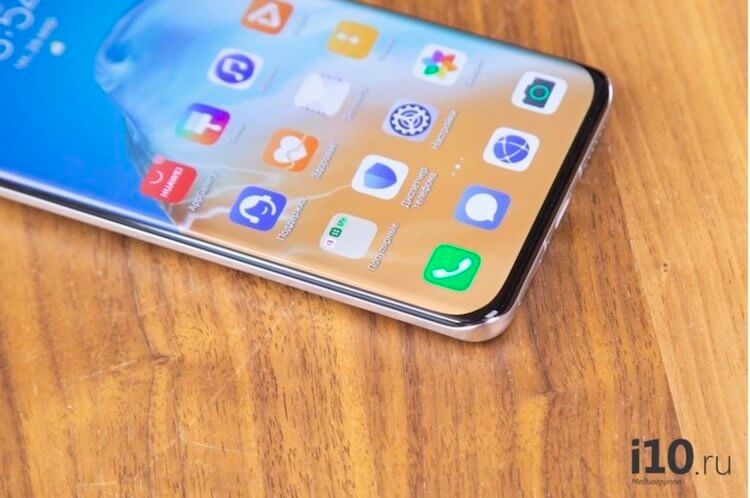
The bottom bezel is twice as narrow as iPhone 11 Pro, but wider than the top.
The screen does seem to be bezel-less. Although, I cannot shake the feeling that the lower frame, although it has the minimum size, is by some nanometers larger than the upper one. To me, it looks somehow sloppy. But it has fillets on all sides. It really feels very unusual.
There are no more complaints. The refresh rate of the screen is not 120Hz, which has become a trend, but only 90Hz, but there are no questions about the smoothness of the main menus. Let's see how the applications work. I will tell you about this in a large experience of use.
The screen diagonal will be 6.1 inches for the junior model and 6.58 inches for the middle and senior ones. The resolution will be 2340 by 1080 pixels and 2640 by 1200 pixels, respectively.
The basic version Huawei P40 will have three cameras, Huawei P40 Pro will have four cameras, and Huawei P40 Pro Plus will have five. Below are their characteristics.

Camera Key Features Huawei P40

Camera Key Features Huawei P40 Pro
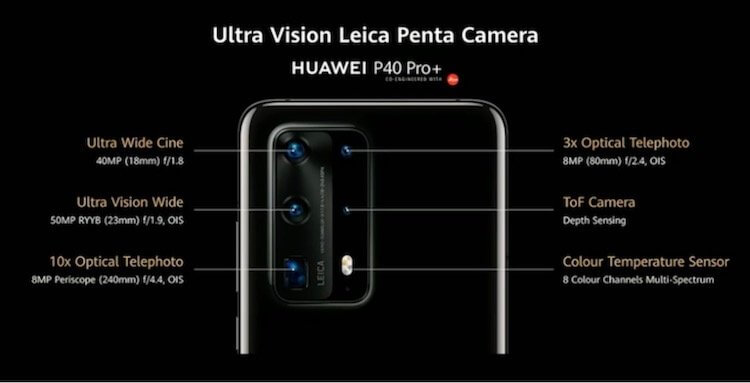
Camera Key Features Huawei P40 Pro Plus
First impressions of the camera are a bit mixed. The quality is generally good, but I have a feeling that something is unfinished. If I'm right, the updates will fix everything.
The front camera of all smartphones is similar in its characteristics, with the exception of a slight difference in the aperture. The resolution will be 32 megapixels, but only two older models are paired with a depth sensor. Additionally, gesture control and unlocking by face projection are implemented.

Matrix size MUCH larger than iPhone 11 Pro
There are many other functions with complex names that usually don't mean so much, but still add a little bit of enhancement to the pictures. It is worth noting only the combination of photos from the series with the possibility of choosing the best combined option.

All camera specs on one slide.
In general, the camera has always been the strong point of the “P” series smartphones Huawei. Therefore, I can't wait to understand it in more detail and talk about it in a great experience of use, which I will prepare a little later. In order not to miss its release, subscribe to us on Google News or join our Telegram news channel.
All three models of the family will run Kirin 990. The company is proud of this processor, emphasizing that it is not only powerful and outperforms some competitors, but also economical. In this case, energy savings reach up to 30 percent.
In addition, this chip can work in networks already in the database 5G. Given the position of Huawei in the world of telecommunications, I dare to assume that their 5G will be better than a similar solution from the rest. It is not for nothing that they make the world's best telecommunications equipment for mobile operators.
There are not many differences between the three models of the Huawei P40 family, but they are still there. In addition to the differences listed above, we can mention the lack of water protection in the younger model. It is provided only at the ip53 level, that is, only against splashes. Older models are ip68 certified. That is, they can be immersed to a depth of one and a half meters for half an hour. Although, I do not recommend doing this and have already explained why.
Also, the younger version will have a less capacious battery. 3 800 mAh vs 4 200 mAh. In this case, all versions will have fast charging Huawei SuperCharge (40W), and the “Pro” and “Pro Plus” versions will also have fast wireless charging.
Huawei The P40 will only have one memory version – 8/128 GB. For older models, there will also be 8/256 GB in the Huawei P40 Pro and 8/512 GB in the Huawei P40 Pro Plus.
The models will be available in blue, white, silver, gold and black, although not all colors will be available in all markets.
The Huawei version of the P40 Pro Plus comes in a ceramic body. It will be less prone to scratches and generally stronger. At least that's what they promise.
Naturally, none of the models will receive support for Google services. Moreover, they will all work on Android 10 with the proprietary shell EMUI 10.1. Apchiki will have to be downloaded from AppGallery. The good news is that Huawei tried to make its own analogues of Google services. There is even a music and video service.
If it were not for the well-known problems Huawei, I would close my eyes and with the words “shut up and take my money” I reached out for my smartphone. For myself, I would choose Huawei P40 Pro.
But, by the sum of the factors, one must understand that using a smartphone will not be easy. It's cool, it works well, it shoots great and it looks great … But it won't suit someone who's used to using a smartphone out of the box. If suddenly the sanctions against the company are lifted, most likely, all services will appear on this smartphone at once, but so far there is no particular hope for this.
If this is an interesting challenge for you, this smartphone will most likely suit you. At least that is what he makes the first impression. We will discuss in more detail in a couple of weeks.
And now the prices … Here they are!
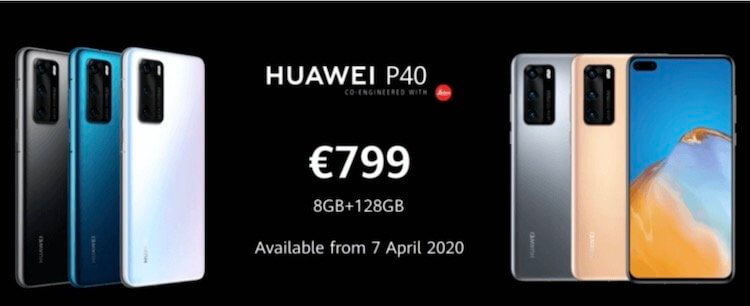
Price Huawei P40
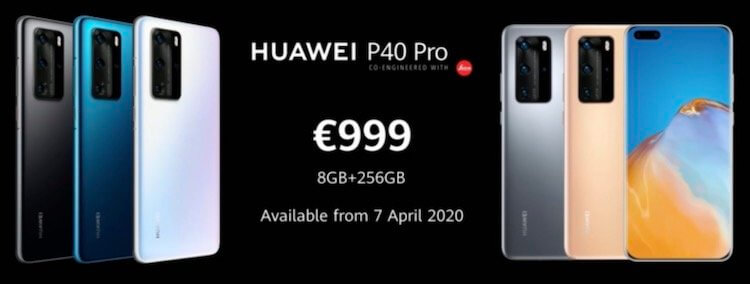
Price Huawei P40 Pro

Price Huawei P40 Pro Plus
What do you think about this? Share your impressions.
